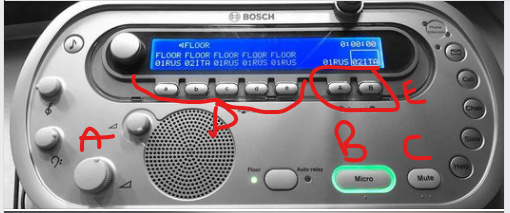Hi everyone,
I asked one of our interpreter who tried BBB with @mikemh and me about the exact needs of an interpreter for simultaneous interpretation. He has just sent me an explanation of a normal booth that we can find also in some online platforms that allow simultaneous interpretation like for example zipdx : https://www.zipdx.info/.
See his message below explaining the needs of interpreters :

This is a picture of one of the most widely used interpreter consoles, which basically sums up what we need:
A: individual volume for each interpreter - as you can see the console also has bass and treble controls which are useful but no way essential in a remote simultaneous interpreting (RSI) environment.
B: Is a button which enables and disables the interpreter’s mic.
C; Mute or cough button … an extremely useful tool to the interpreter
D: These buttons enable you to listen to the other languages being produced - particularly useful when you need to take what we call relay, that is, if, for example, the speaker is speaking in Chinese and Chinese is not one of your languages, you listen to the production of the booth translating from Chinese into English and from the English you then translate into Spanish (for example).
E: These buttons allow you to choose the outgoing language, in this case the booth would produce either Russian or Italian.
The crescent of buttons on the right are to message the speaker or chair to ask them to: slow down, please repeat, help, etc. (useful also, but not essential, in an RSI environment).
It is vital also for us to be able to hear (at the same time) the original + the production of our boothmate. This is for two things: 1. An important role of the “resting” interpreter is to help the “active” interpreter, writing down figures, helping with acronyms, looking up terminology, references, etc., and particularly to know that you need to take over swiftly if your boothmate gets stuck. 2. To facilitate a smooth handover from one interpreter to the other. To such ends, to be able to see one’s boothmate is extremely useful too.
The other essential thing for us, is to be able to see both the speaker and any presentations that he/she may be using.
Tony
I hope this can help to understand the needs of an interpreter, who doens’t interpret in only one language but need to do for example SP>EN and then EN>SP.